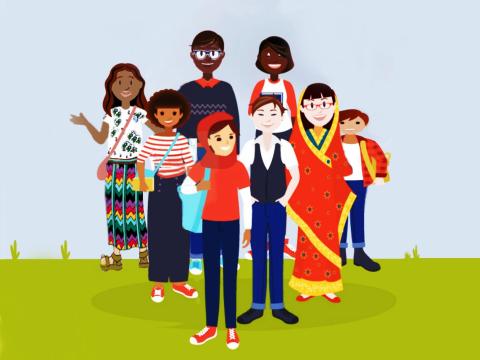Challenging the homogenous view of childhood

By Patricio Cuevas-Parra
Whilst talking with children and young people in the Northeast of Brazil, they told me that their lived experiences are often shaped by discrimination, prejudice, racism and patriarchal beliefs as examined by intersectionality scholars. For the purpose of this blog piece, intersectionality refers to the critical insight that race, class, gender, ethnicity, ability, and age operate as reciprocally constructing phenomena (Collins, 2015). Thus, without ever hearing about the concept of intersectionality, children and young people identified multiple characteristics that not only make up their identity but also contribute to their unequal access to social and political power and their scarce opportunities to realize their full range of child rights.
Why are Children embracing intersectionality?
When children and young people introduced themselves during the interviews, most mentioned their names, ages and, tellingly, their race, ethnicity and socio-economic status. For instance, it was common to hear, ‘my name is Flavia, I am 14 years old, and I am a black girl from a poor neighbourhood on the city outskirts.' My first impression was that they marginalised themselves by emphasising the different factors contributing to their oppression. For example, white over black, male over female and rich over poor. As the conversations continued, though, I realised that their recognition the uneven factors shaping their social identifies social identities was quite the opposite. They were not emphasising their perceived vulnerabilities, as I first thought, but instead were embracing their unique position in society and highlighting their sources of domination as a way of contesting and rejecting exclusion. You can read more about these reflections in my manuscript entitled, ‘Challenging the Homogenous View of Childhood: The Importance of Using an Intersectional Lens to Understand Oppression and Discrimination’.
Reflecting what Freire (1993) refers to as a ‘critical consciousness approach,’ children and young people reported that felt enlightened by the process of becoming aware that their opportunities to thrive and equally participate in society is determined by their gender, race, ethnicity, age and socio-economic status. Thus, the intersection of their social identities and lived experiences of inequality shaped their experience of being part of marginalised social groups. Being aware and conscious of the surrounding structures of domination and oppression was the first step towards valuing their identities, recognising their struggles and feeling capable of making a change.
The findings indicate that the simplification and homogenisation of children and young people as a one-dimensional social group undermines the uniqueness of their particular identities and the specific ways in which they construct and reconstruct the meaning and significance of their experiences (see also Konstantoni and Emejulu, 2017; Alanen, 2016). By recognising and addressing these intersectional differences, we are encouraged to move away from using a lens that only focuses on children and young people’s marginalisation and vulnerabilities to a model of understanding childhood that acknowledges and respects their autonomy and agency, as well as their evolving control over their lives (see also Tisdall, 2017). In this research study, the Brazilian children and young people positioned themselves as political and social actors who embrace their social identities and develop their own narratives and discourses to contest injustice and inequality. Thus, within this landscape, children and young people continuously negotiate power by using an intersectional lens to understand oppression and discrimination and to challenge the homogenous view of childhood.
References
Alanen, L. (2016) ‘Intersectionality and other challenges to theorizing childhood’, Childhood, vol. 23, no. 2 [Online]. Available at http://journals.sagepub.com/doi/full/10.1177/0907568216631055 (Accessed 20 December 2021).
Collins, P. (2015) ‘Intersectionality’s Definitional Dilemmas’, Annual Review of Sociology, vol. 41, pp. 1–20 [Online]. DOI: 10.1146/annurev-soc-073014-112142.
Freire, P. (1993) Pedagogy of the oppressed, New York, United States, Continuum.
Konstantoni, K. and Emejulu, A. (2017) ‘When intersectionality met childhood studies: the dilemmas of a travelling concept’, Children’s Geographies, vol. 15, no. 1, pp. 6–22 [Online]. DOI: 10.1080/14733285.2016.1249824.
Tisdall, E. K. M. (2017) ‘Conceptualising children and young people’s participation: Examining vulnerability, social accountability and co-production’, The International Journal of Human Rights, vol. 21, no. 1, pp. 59–75 [Online]. DOI: https://doi.org/10.1080/13642987.2016.1248125.